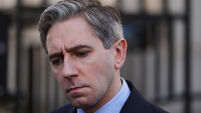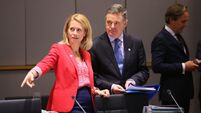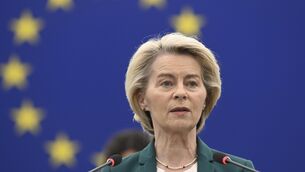Oliver Mangan: Four factors prevent Europe from recession

A bumper summer holiday season is anticipated after two years of Covid-disrupted activity. Picture: Laurent Sanson
The Eurozone economy grew by a subdued 0.3% in the first quarter of 2022, a repeat of its performance in the final three months of last year.
The softness in growth reflected the impact of Covid restrictions on activity over the winter months, with rising inflation also weighing on spending power.
The expectation was that activity would strengthen over the remainder of 2022 as activity rebounded from the Omicron-induced winter slowdown and inflationary pressures eased.
The war in Ukraine, though, has completely changed the outlook for the Eurozone and broader EU economy, and growth is now expected to remain very subdued throughout the year.
Further sharp increases in commodity prices, tightening financial conditions as interest rates rise, renewed disruptions in global supply chains, and elevated uncertainty are all set to weigh on growth throughout 2022.
This is reflected in the latest set of economic forecasts published last week by the European Commission (EC).
It slashed its growth forecasts for the Eurozone and EU economies to 2.7% in 2022 from 4% previously, also lowering next year’s GDP growth forecast to 2.3% from 2.75%.
An annual growth rate of 2.7% in 2022 might seem reasonable, but in reality it is largely due to positive carryover effects from 2021 when the economy grew by 5.4%.
The EC estimates this carryover adds about 2 percentage points to the annual growth rate this year. The year-on-year growth in GDP is expected to slow to around 1% by the final quarter of 2022, which represents the actual output growth within the year.
Firstly, the labour market is very strong, with employment rising by 0.5% in the first quarter amid high levels of unfilled vacancies and unemployment falling to a record low level.
As a result, the EC sees wage growth of circa 4% this year, which combined with high levels of savings should help support consumer spending.
Secondly, fiscal policy is also being loosened via Government measures to mitigate the impact of higher energy prices, as well as increased spending on defence and humanitarian measures. This could add close to 1% to GDP.
Thirdly, a bumper summer holiday season is anticipated after two years of Covid-disrupted activity.
Finally, investment will be supported by the full rollout of the EU’s Covid recovery fund and the need to frontload green energy and energy-saving investment.
The EC’s forecast of 2.3% growth for 2023 implies a marked strengthening of activity next year.
GDP would need to expand by 0.7-0.8% per quarter, with the growth rate picking up to circa 3% year-on-year by end 2023.
This is crucially dependent on a sharp fall in inflation next year. It also assumes Covid-19 does not cause significant disruptions to economic activity in the EU and that there is solid growth in the world economy.
The balance of risks surrounding this forecast is very much skewed to the downside, as the EC itself acknowledges, with a continuation of subdued growth certainly possible next year.
- Oliver Mangan is Chief Economist with AIB













